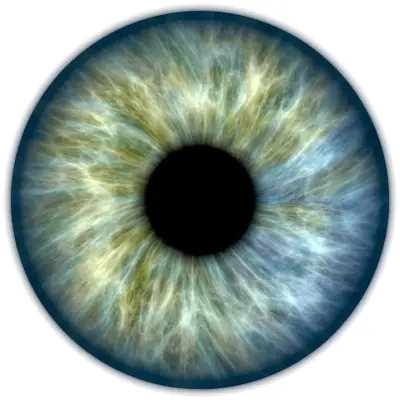Iridology is the study of the iris - the coloured part of the eye - and how it shows psychological health risks and physiological conditions, challenges and strengths of different organs. This blog post explores iridology in more detail, covering its science, history, and practical applications.
Jump to:
What is Iridology?
Through iridology, we get a detailed understanding of past, present, and future health conditions. It provides indications of the body’s inherited tendencies, along with being a tool to assess our various body systems.
There are 4 principles that form the cornerstones of iridology:
- The condition of the nerves
- Adequate circulation
- The condition of the blood and lymph system
- Nutrition, rest quality, breathing, state of mind
Recommended for you!
Best SellersThe Science of Iridology
The science of Iridology involves analysing the structures of your whole body, through studying the iris. This is the method where an iridologist could tell you, from signs or markings in your iris, the condition of the various organs and systems of your body. These signs represent a detailed picture of the integrity of your body; different areas of congestion or toxic accumulation, constitutional potentials, and inherent challenges.
An iridology exam shows the colour variation, structure, pigmentation, and other characteristics of your iris, which provide important information about your health and wellbeing. After analysis, the patient is empowered with a new understanding of their body and health, along with valuable recommendations for prevention and ongoing care.
There is a major advantage iridology has over other methods of health screening. It shows tendencies and the potential outcomes should a recipient continue living their life in a certain way. Hence, symptoms could be prevented years before they may actually occur. This preventative action may be taken in order to improve health and to avoid the diseases that may otherwise follow.
The History of Iridology
The very first clear description of iridological principles was found in the book, Chiromatica Medica, which was published in the year 1665 and was reprinted in 1670 and 1691. However, the very first use of Augendiagnostik (eye diagnosis) began with the ‘founding father’ of iridology, Ignaz von Peczely - a nineteenth-century Hungarian physician.
The second 'father' of the iridology is said to be Nils Liljequist. Suffering from the unnatural outgrowth of his lymph nodes, he observed that after receiving quinine and iodine to treat the ailment, the colour of his irises changed. It was this observation that lead him to publish his book, Diagnosis of the Eye, in 1893 - an atlas of 12 colour illustrations of the iris and 258 black & white illustrations.
During the early 1900s, German natural healer, Pastor Immanuel Felke, became one of several people responsible for the systematic development of iridology. Alongside his work as a naturopath, he practised iris diagnosis - describing the iris structures that can help in identifying illnesses. His name is so well regarded in this area that the Felke Institute in Gerlingen, Germany was named after him. It was known as one of the leading centres of iridological research & training.
Iridology became known in the USA during the 1950s. Bernard Jensen established the practice in America and gave classes in his method, which used the study of the iris to make individual judgments on bodily functions.
7 Things That Iridology Might Reveal
- Inherently strong/weak glands, organs, and tissues
- Different stages of hyperactivity /hypoactivity and inflammation
- Lymphatic system congestion
- Consequences of physical and mental stress or fatigue on the human body
- Constitutional weaknesses and strengths
- The condition of bowel tissue
- The relative ability of a gland, organ, or tissue for retaining nutrients
7 Things That Iridology Might Not Identify
- Pregnancy
- Individual diseases
- The presence of fungal and candida infections
- Your levels of blood sugar and blood pressure
- Gallstones
- The drugs or medications that a person has already used and if any kind of surgical operations have been done
- Presence of sexually transmitted disease
What Might an Iridologist Look For?
When examining the patient’s eyes, the iridologist would typically look at:
- The colour of the patient’s iris
- Rings and other shadings or discolourations of the sclera
- Brightness and darkness
- Shape as well as placement of trabecular fibres
With the results of this examination in hand, the iridologist would compare their findings against a chart that indicates different potential health concerns which will have triggered changes in the patient’s iris. The iridologist would also take measurements over time in order to track the changes, to track the progression and regression of ailments.
Recommended for you!
Best SellersStudy Iridology for £29
If you're interested in learning more about iridology, consider enrolling in our Iridology Diploma Course. For a limited time, you can access this comprehensive course for just £29!














